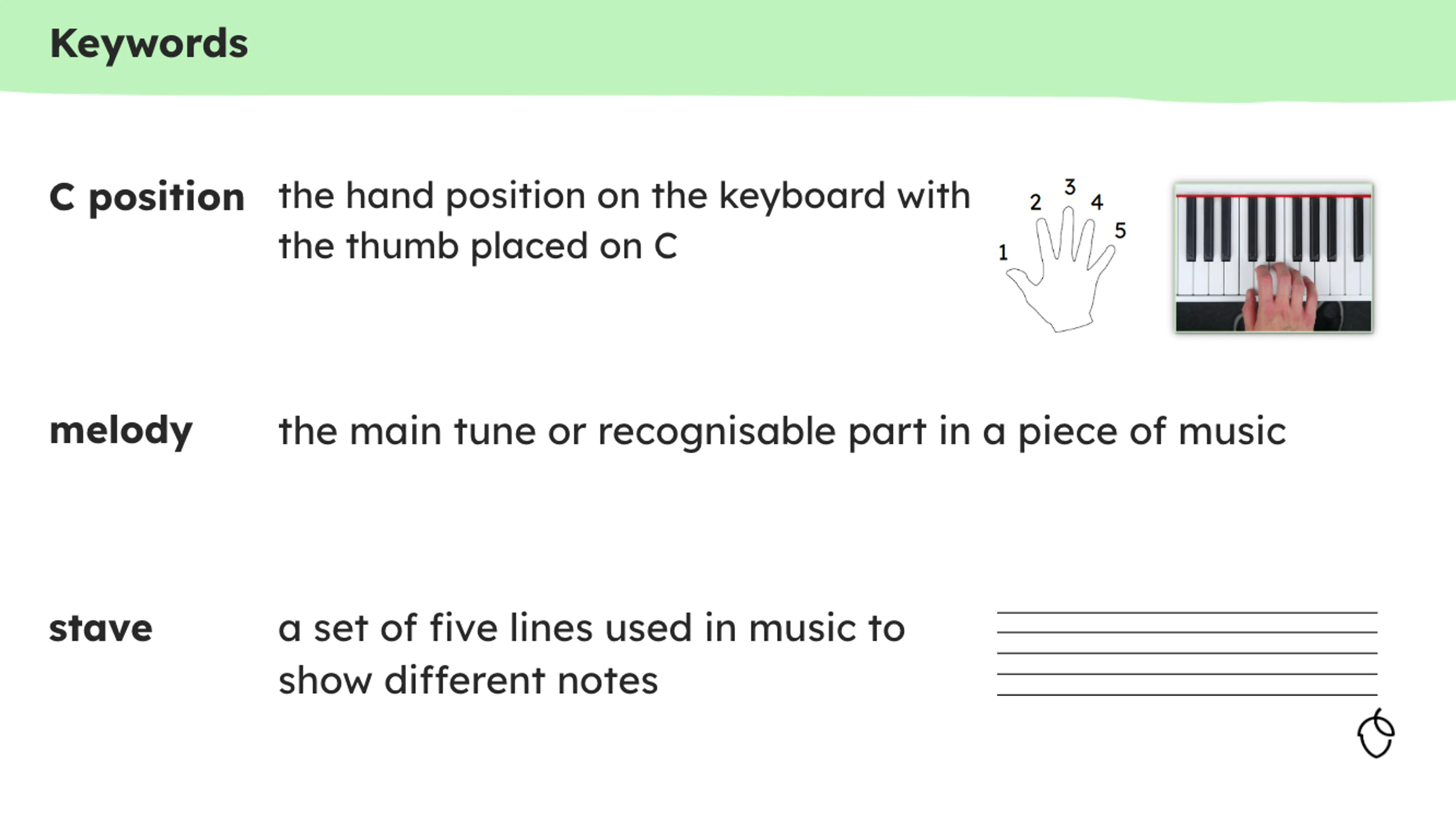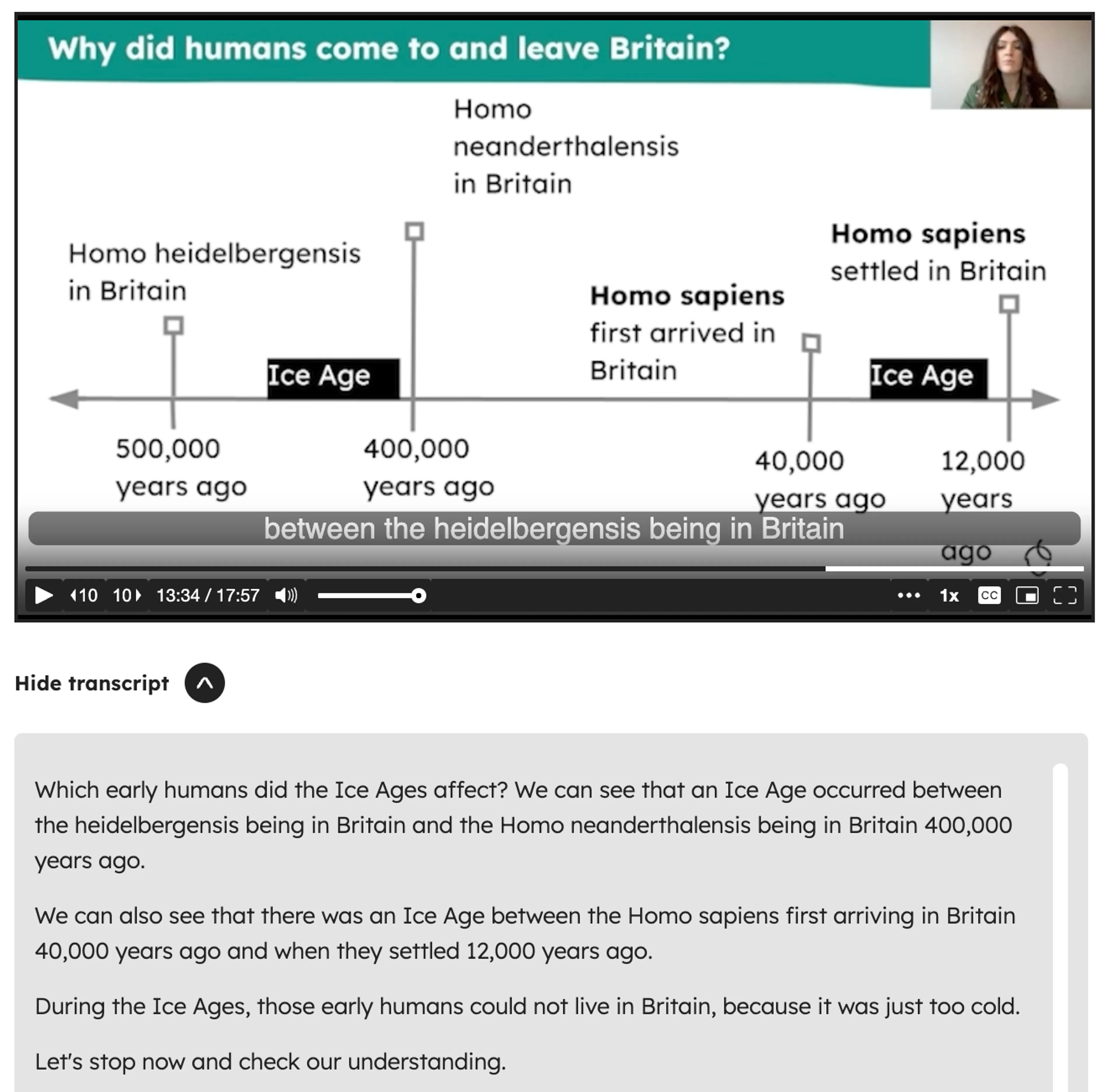
Categories
Research and insights
15 October 2024Supporting pupils with SEND? How Oak can help

Laura Benton
User Researcher
Our curriculum plans and teaching resources have been designed to be as accessible as possible for all pupils, but we are always looking for ways to improve so we can help teachers to meet their pupils’ needs.
We conducted research to explore the challenges teachers in mainstream schools face in supporting pupils with SEND. Here, we share our findings and highlight some of the ways we can help.
What are the challenges SEND support teachers face?
Teachers experience a range of challenges in supporting pupils with SEND:
- Overcoming gaps in basic literacy and numeracy skills with older pupils
- Finding ways to build confidence
- Addressing memory issues
- Dealing with the complexity and diversity of needs
- Variation in SEND training
Our resources support teachers in several ways:
- They enable out-of-class/small-group learning
- They are designed to meet accessibility standards
- Teachers can easily adapt the resources to specific pupil needs
Current SEND landscape in England
This year over 1.6 million pupils in England were reported to have special educational needs.1 2Just under a third of teachers have additional responsibilities related to special educational needs and disabilities (SEND) as part of their role,3 but given the high numbers of pupils with SEND all teachers have to consider how they can best meet their particular needs.
Subsequently, we know that many teachers spend time creating bespoke resources for pupils with SEND.4 In fact, Teacher Tapp data5 has shown that an increasing number of teachers would like more planning time to meet the needs of their pupils with SEND, and this has been identified as a factor contributing to the high teacher workload.6
In a recent independent evaluation,7 teachers highlighted that our resources are already working particularly well for pupils with SEND, sharing that “pupils respond well to the structure, can revisit content as often as they need to and work at their own pace”. However, we wanted to understand more about why this was, what the most pressing needs were and how else we might support teachers and pupils in this area.
We undertook some research to answer these questions, reviewing the latest papers and interviewing SEND experts and teachers to help us build a rich picture of the current SEND landscape in mainstream schools.8
Although the term ‘SEND’ covers an extremely broad and varied group of pupils we focused on insights that would apply to a significant number of pupils within this population.
Most pressing challenges in SEND provision
As many teachers will know, an ongoing challenge (particularly at secondary school) is that some pupils with SEND lack the basic foundational skills in literacy and numeracy necessary to progress in their learning across a range of subjects.
In our interviews, one teacher explained that a lack of skills in one area can hold them back in others. “I have children who are really good writers. Their language and their command of different writing in features is amazing, but then their general sentence structure and their letter formation is really poor. So that's a massive barrier”.
This indicates a clear need for more support in helping pupils to continue to develop basic foundational skills at secondary and to provide more scaffolding in areas where they continue to struggle.
We heard from teachers that they were often required to find ways to support and build the confidence of pupils with SEND.
Pupils could be particularly worried about writing anything down for fear of getting something wrong or others judging their work.
In more extreme cases, getting something wrong could result in disengagement from learning, which often requires ongoing support and encouragement from the teacher.
One secondary teacher explained: “Our [SEND] students struggle with getting things wrong…if it's deemed as being wrong, they will shut down and we might not get a head up from the desk for two hours”.
Another common need that teachers highlighted is that pupils with SEND can experience problems with memory (both long-term and working memory).9 10
This means that even if a pupil understands a concept they may find it challenging to recall and retrieve in subsequent lessons even just a few days later, particularly in independent learning tasks.
One primary teacher explained how she would often use particular strategies to remind pupils of the key learning points from a previous lesson and found this to be particularly useful for her pupils with SEND “that need that extra level of support, who quite often have poor memory issues as well as their learning issues”.
A major challenge that teachers faced was how to meet the increasing complexity and diversity of needs of the pupils in their class, as there could be significant differences between pupils with the same diagnosis:
“It can be really difficult because you can have two dyslexic students, but they're not going to need the same thing from resources” as well as individual pupils who had a complex range of needs. For example, one primary teacher explained “I think the biggest challenge for me is with the individual children who have got various SEND needs. Because you're accommodating so many needs, they sometimes even conflict with each other”.
Some of the teachers highlighted a need for more SEND-specific training and resources.
The SEND training available varied significantly between the teachers we spoke to, with some teachers happy with the provision whereas others felt that the training available was quite limited.
Often the training was tailored to the needs of the school and would focus on a particular diagnosis in response to the current pupil population with SEND. However, in other cases it was left up to individual teachers to choose what to access via online training, sometimes without being given any extra time to complete this. In addition to this many teachers found it hard to find suitable resources for their pupils with SEND, often needing to spend time adapting resources to ensure they were accessible for their whole class or simply looking at resources for lower-year groups.
How teachers are currently using Oak to support pupils with SEND
Teachers highlighted a number of scenarios where they found our resources particularly beneficial for pupils with SEND.
Firstly for out-of-class/school learning, some pupils with SEND are unable to attend school and have prolonged periods of absence as well as working from other areas of the school such as pastoral care centres or behaviour rooms. Therefore, having an option that allows them to easily set suitable work at home or for pupils learning outside the classroom was important, and teachers found our resources worked well for this.
Another common scenario was the use of the resources to support pupils with SEND receiving additional provision in a small group setting, to help fill a particular gap in their learning. Teachers shared how teaching assistants used our resources during these sessions to supplement in-class learning with a more tailored approach: “So as a class teacher, what I do is [pair] teaching assistants alongside resources like Oak learning videos [...] to help the pupils get a quality learning experience that they’re not going get from a teacher because I can't teach them individually”.
How our resource design supports the needs of pupils with SEND

As a first step, our resources have all been designed and checked to ensure they meet accessibility standards. All lessons feature similar design, and follow similar pedagogical patterns, meaning that pupils become familiar with the structure. Everything from font, amount of content on slides, the colours, to the use of short, simple sentences has been considered.
Our resources aren’t marked with a specific year group, which makes it easier for teachers to use resources with older pupils that would typically be taught in earlier key stages to help reinforce those basic foundational skills.
We encourage teachers to use our resources as a starting point. We make it possible for teachers to easily adapt them for the specific needs of their pupils with SEND by providing editable versions of the slide decks and worksheets. This allows teachers to make adaptations such as removing slides or other elements, chunking the text into smaller ideas, spreading the content across more slides, adding images or changing a particular activity to be more interactive.
One secondary teacher highlighted that our lesson transcripts from videos of teachers delivering the lesson were particularly helpful in making these adaptations: “I was looking at one when we did Stone Age Man and it had just simply a timeline and I knew that wasn't going be enough for my students. So when I downloaded the slides, I copied the timeline into 5 different slides and each one I adapted so [...] it wasn't all the information on one slide. It took a slide at a time, but it allowed me to use the transcript to actually prepare and form a better lesson, so I really like that”.

Other teachers have taken elements of the resources and merged them with their own. For instance, another secondary science teacher explained that in the new resources, “you've got some nice simplistic diagrams and explanations so sometimes I merge these with my stuff”.
Although our resources are already helping teachers support their pupils with SEND, there is much more we want to do.
We are considering the various improvement areas that teachers suggested and coming up with ideas for how to best reflect these within our resources. Keep an eye on our blog for future updates on this work.
Acknowledgements
This research was undertaken in collaboration with Aiden Severs.
We would like to thank everyone who shared their valuable experience and expertise with us during this research, including:
- Gary Aubin, SEND Consultant
- Dr Anita Devi, CEO & Founder (TeamADL)
- Dr Tracy Edwards, Lecturer in Special Educational Needs (Leeds Beckett University)
- Liz Herbert, Associate Professor (UCL)
- Barry Reed, Headteacher (Gilbert Ward Academy)
- Michael Surr, Head of Education (nasen)

